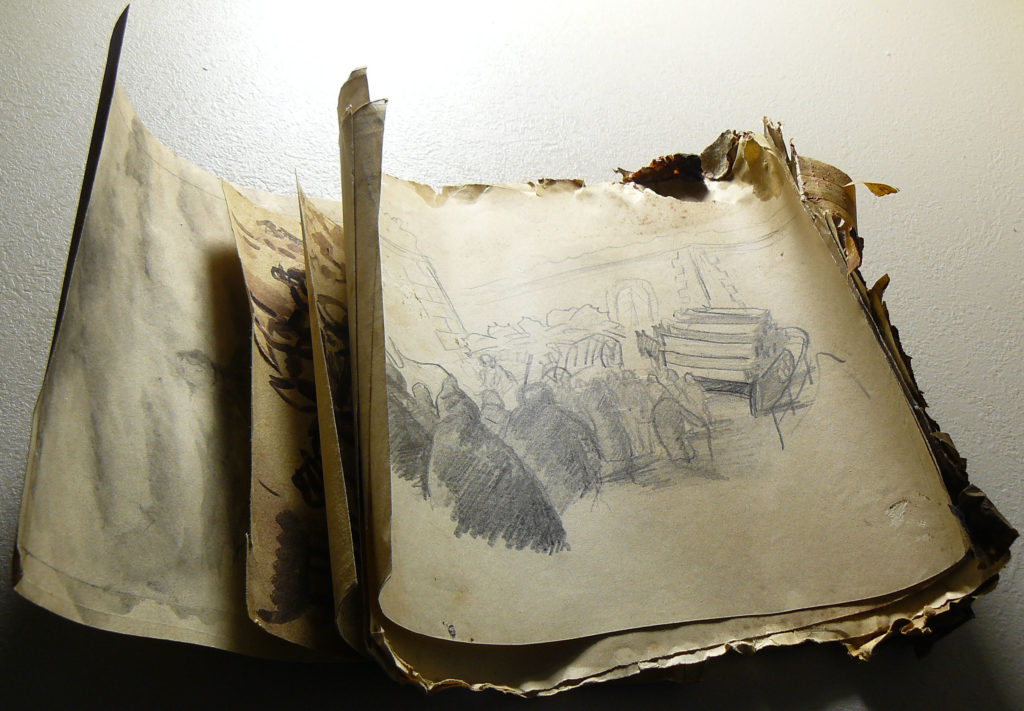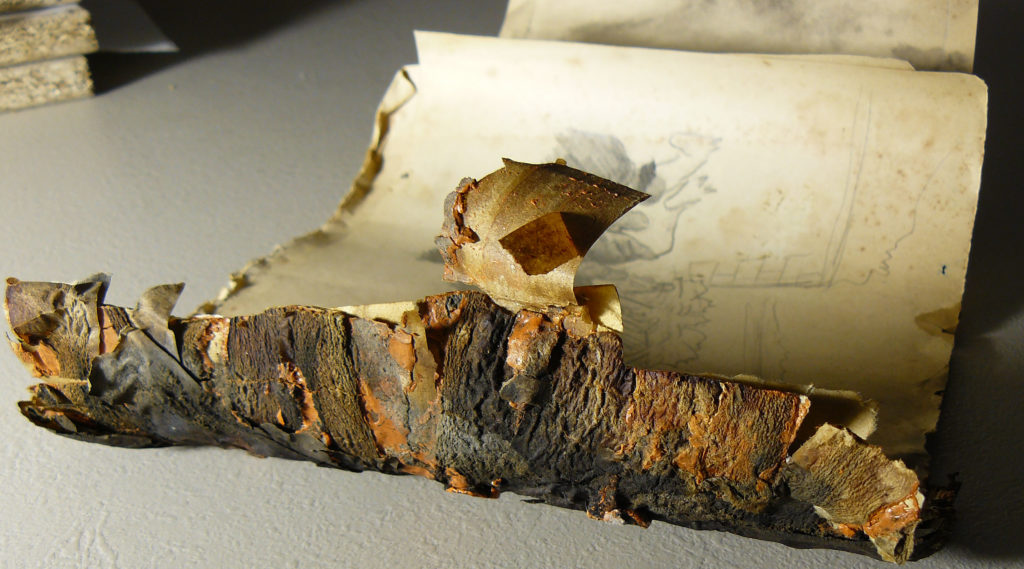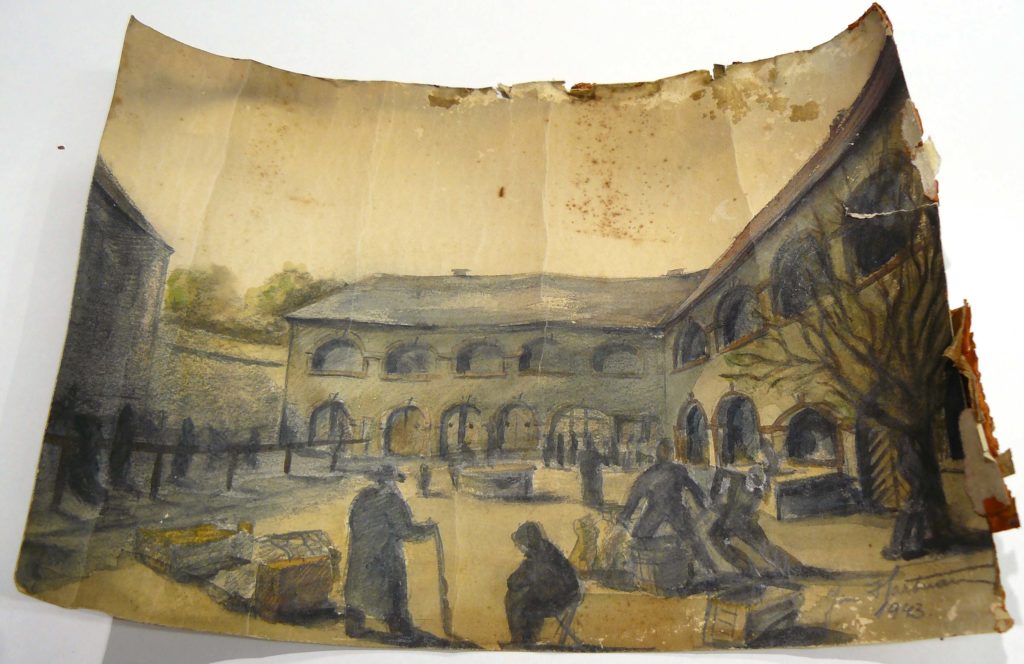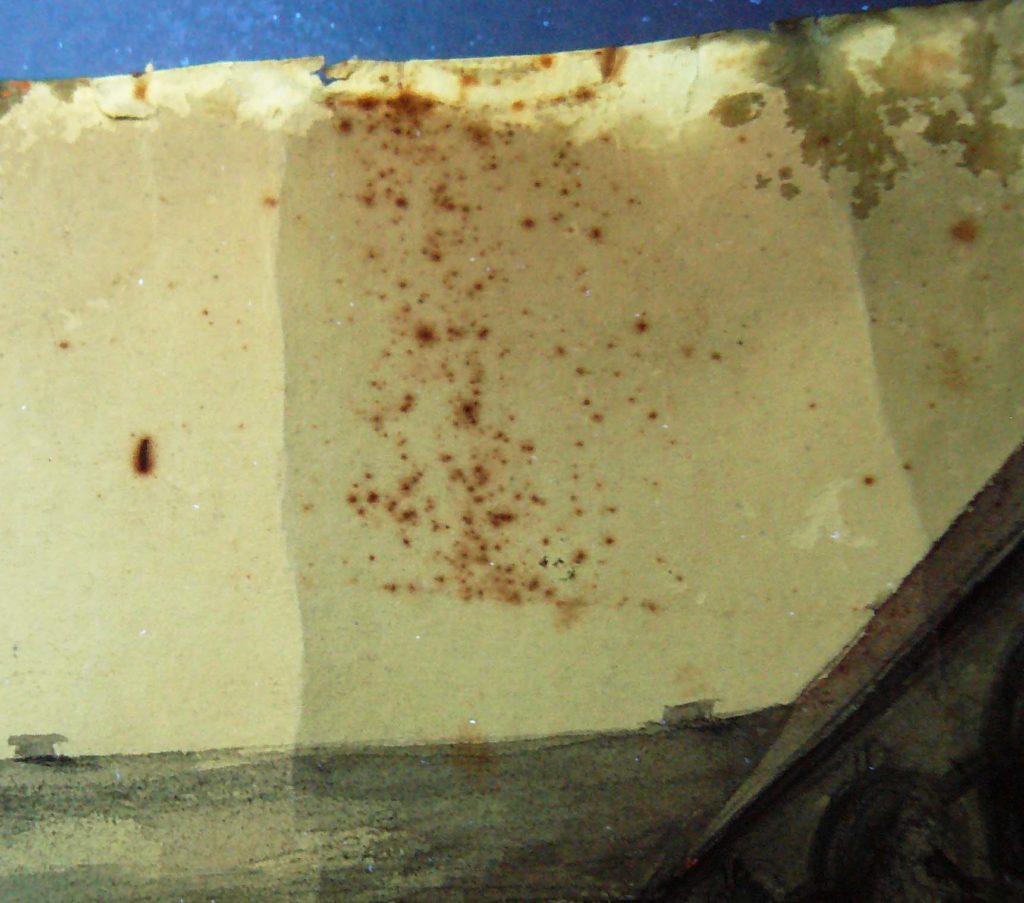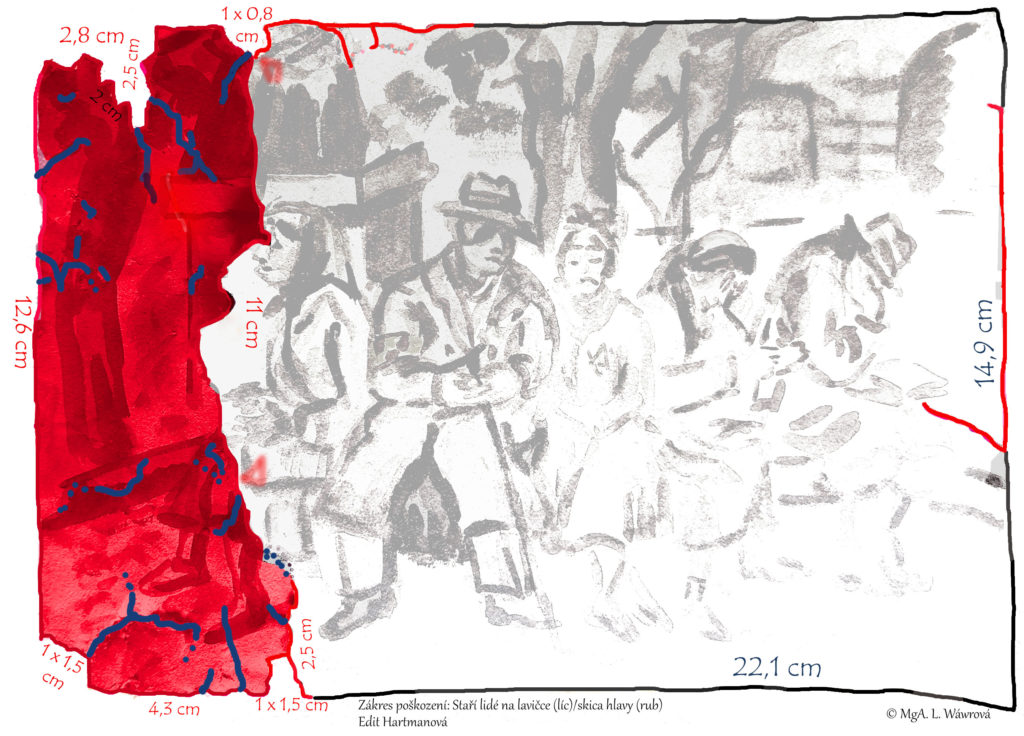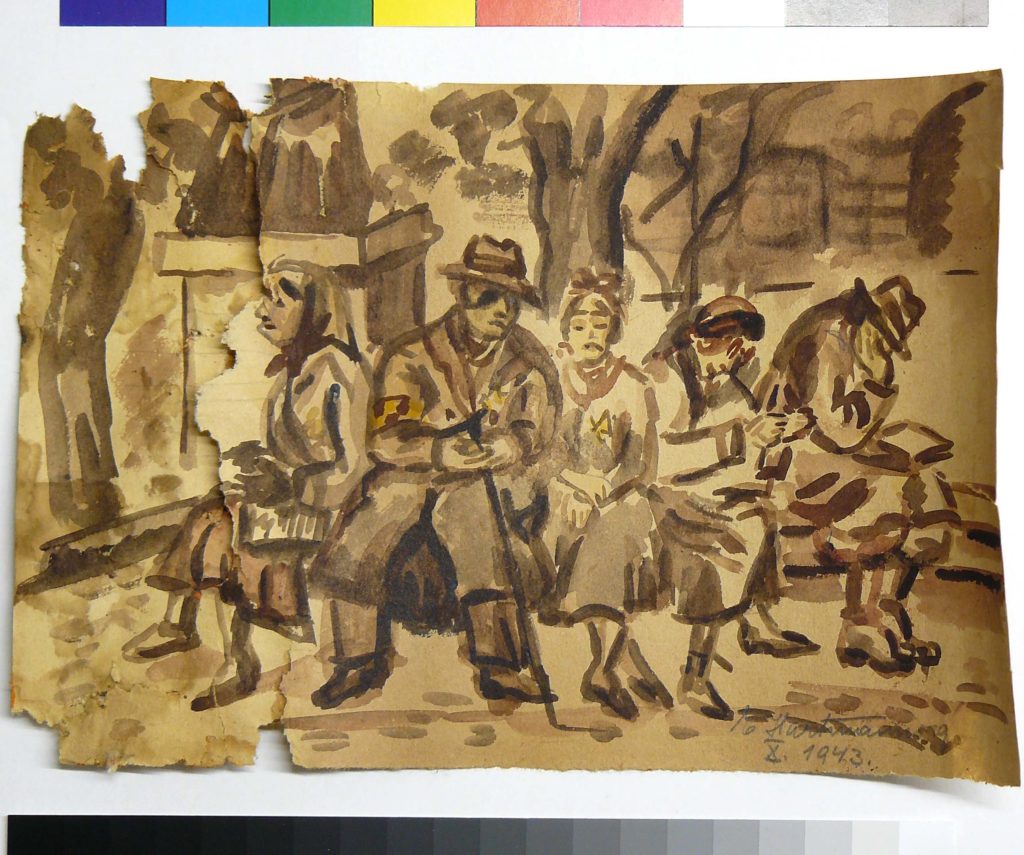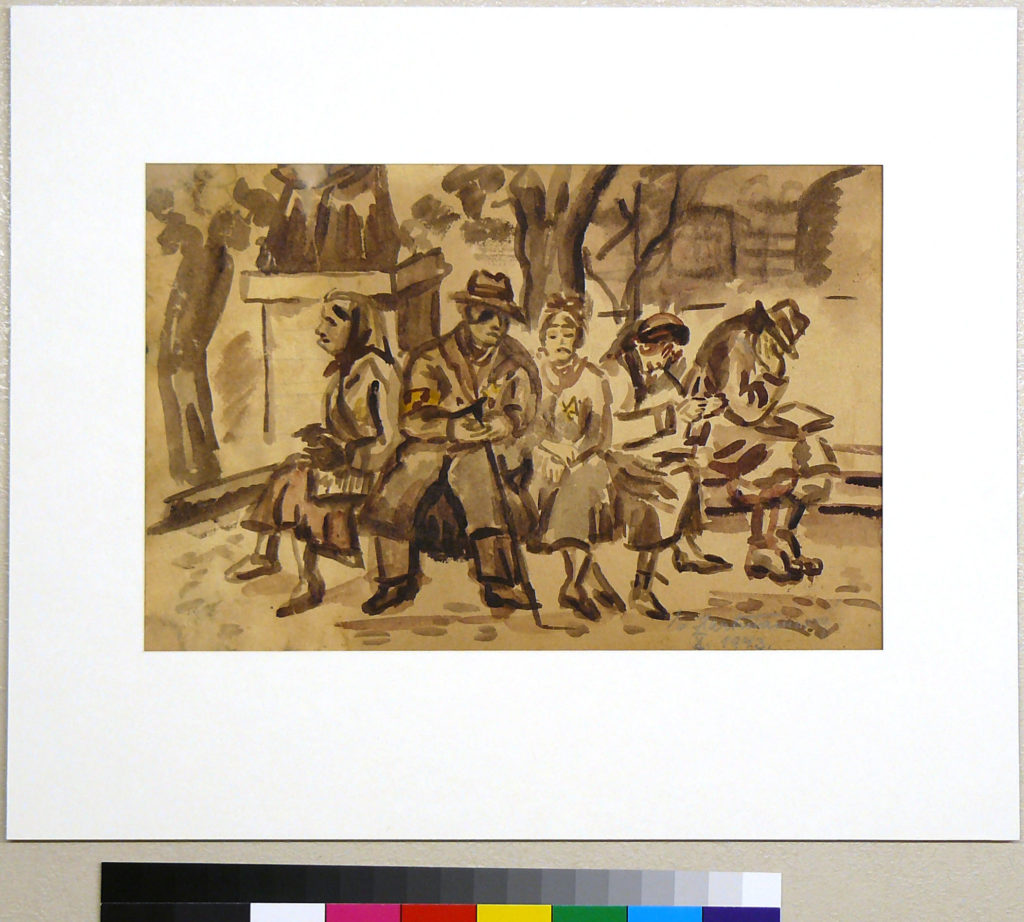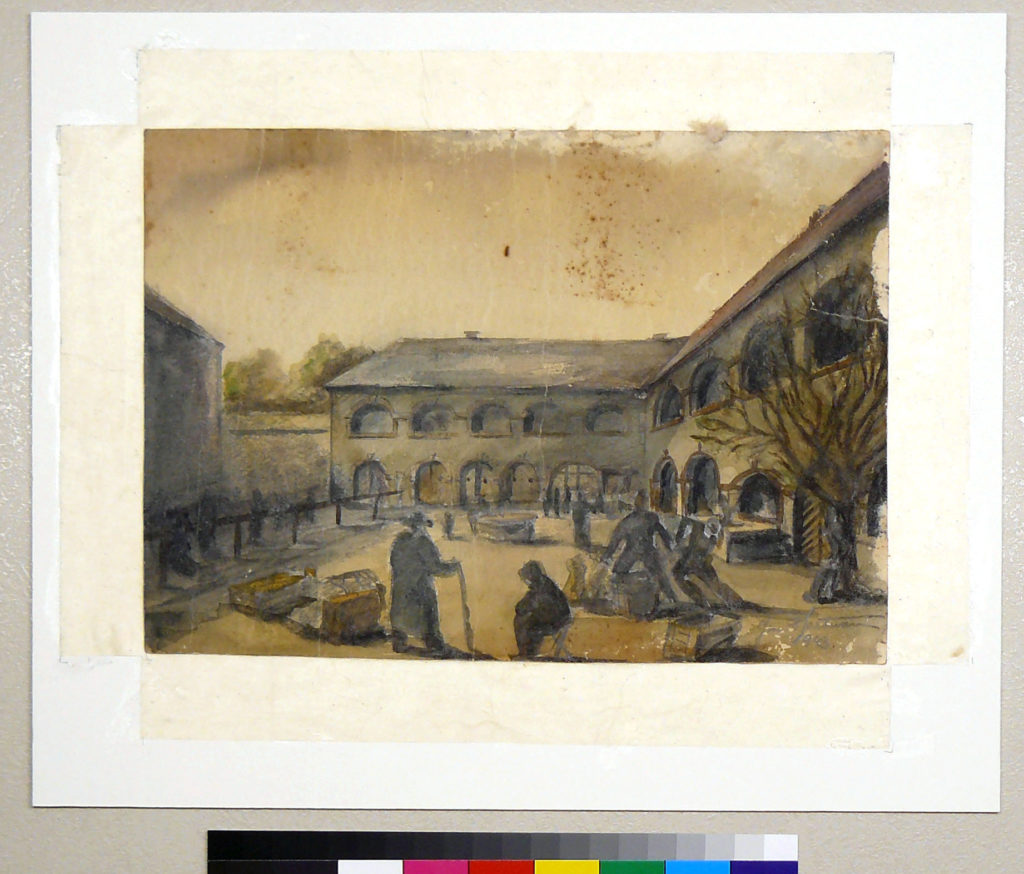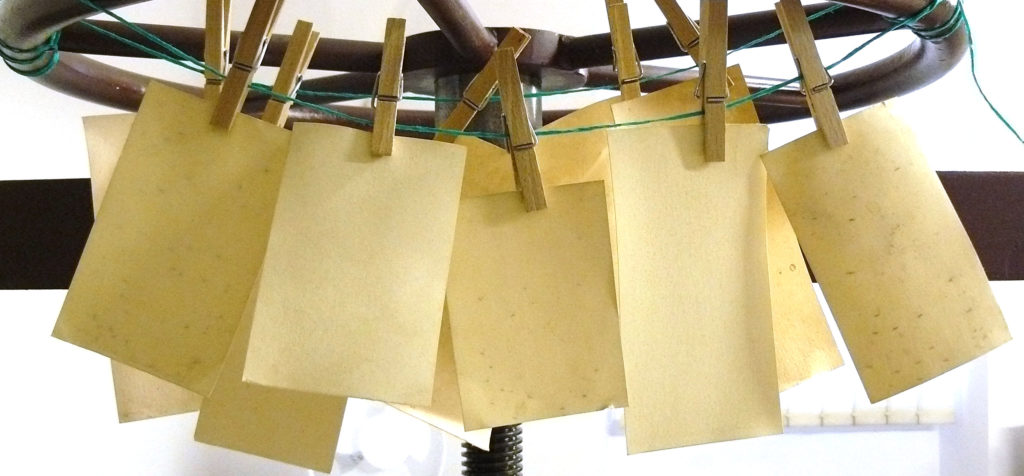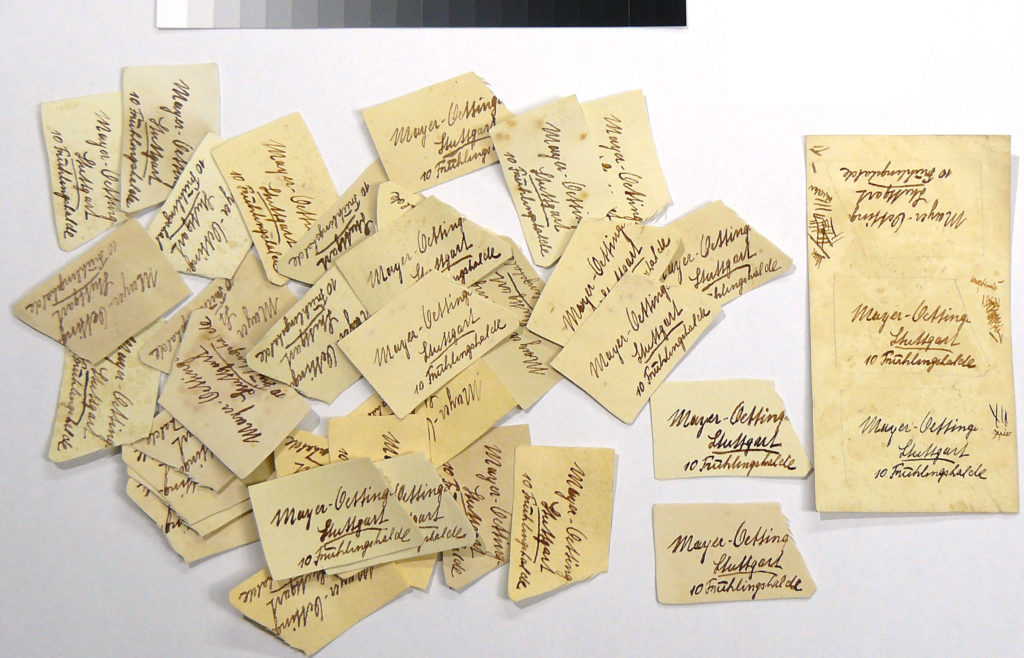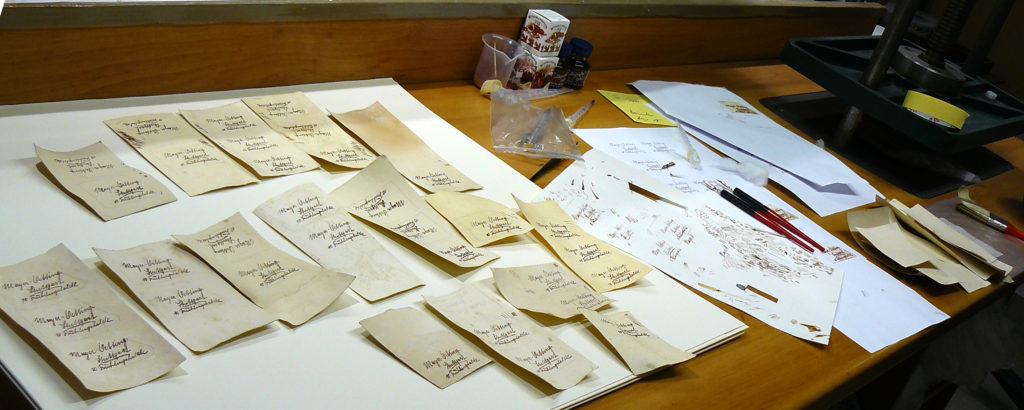Interview with restorer MgA. Luisa Wáwrová
MgA. Luisa Wáwrová began working in the Terezín Memorial as a restorer in 2018, specializing in restoring and conserving works of art on paper, canvas and related materials (reverse painting on glass, frames…). The Memorial´s restoration workshop, Luisa´s workplace, is situated in the former Magdeburg Barracks, one of the objects administered by the Terezín Memorial. In the following interview Luisa sheds light on the background of her profession. In a rich list of illustrations you can follow the transformations of an object during its restoration, just as Luisa describes below.
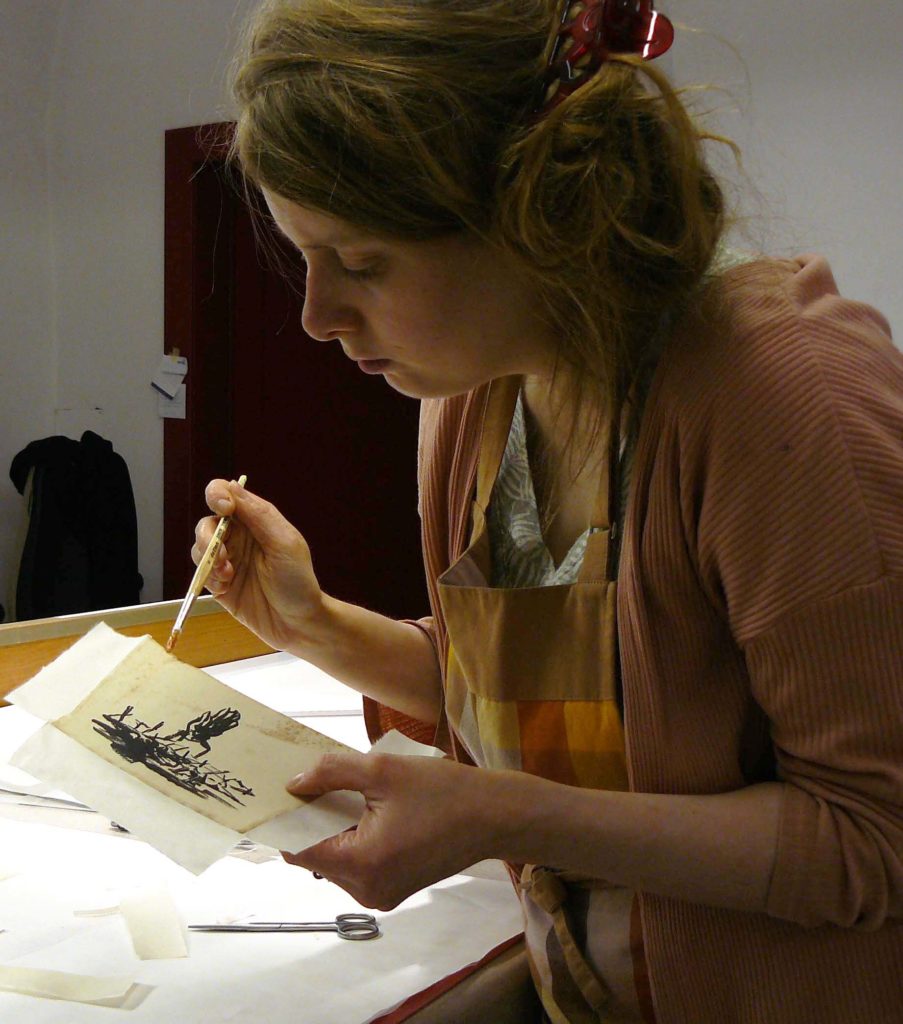
Luisa, what is the mission of a restorer´s work?
My work is a craft and simply involves the process of restoring a however damaged exhibit to its original appearance. What is very important in this case is the specific nature of each object. It may be a work of art on paper, wood, glass, a mural, or a sculpture etc. That is the point of departure for the actual course of action, its procedure. Of substantial importance is the degree of damage (ranging from relatively slight to disrepair). Customer´s requirements and ideas are always important. And restorer´s actual possibilities in restoring an artifact must be naturally taken into consideration as well.
Could you kindly enlarge on this?
Take, for example, a church statue in a very miserable state, with some of its parts missing (e.g. arms, legs). Such a damaged art object must be restored to its original state according to documented analogies. Furthermore, believers find it important for a statue to be complete, hence it should be made complete (without any recognizable differences to be seen between the original and the restored work) rather than conserved as a torso.
A similar process is used in case of art objects made on paper support or on canvas. Their restoration always depends on the degree of damage. If we have no documents showing how the work looked before its physical depreciation to a state verging on the fragmentary, then restorer can take the following routes: first – object can be suitably conserved in the shape of a preserved torso, thus preventing especially potential further deterioration. Secondly, it is possible to cement large-scale losses in the colorfulness of the support. At the same time, this involves a neutral retouching, leading to an optical uniting of the object. Thirdly, whenever possible to find from available prints or paintings how the original scenery looked like (possibly based on a similar scene), we can proceed by way of reconstruction.
Could you describe the process an art object goes through from the moment you get it damaged on your working desk until the moment of delivering finished work to the customer?
Before restoration proper each object undergoes so-called initial analysis by virtue of non-invasive research aimed at detecting the actual degree of damage. It is examined in diffused daylight by a robust lateral light, translucence and UV radiation (luminescence). The physical status of an object or a painting is thoroughly described; it is measured, with greater damage being sketched in. A framed work is photographed and removed from its frame.
Invasive research may also be carried out, comprising, for instance, taking samples from its support, from its color layer; such samples are then sent for analysis to a specialized chemical laboratory.
Following this initial procedure, I start working on the object: e.g. if its color layer is disrupted, its consolidation (strengthening) is vitally needed etc. Next comes cleaning of both support and color layers. It always depends on many different circumstances. This is followed by removing glue tape, transparent sellotape and glued-on pieces of carton from the reverse sides, eventually from the obverse, too. The technique applied here is dry splitting along individual layers or under gradual softening. Another step is dry mechanical cleaning, moistening and straightening paper support. If that happens to be in good condition, tears are locally mended from the reverse by means of Japan paper. A brittle support with large-scale tears and losses should be pasted all over its back. Then the missing parts are filled in with Japan paper, cast in by paper pulp, or the work is left in its torso shape. This procedure depends on the specific object and on the required goal of its restoration.
Needless to say, an object may be damaged in other ways than the cases described above. Therefore, I gradually get down to doing what is needed. I keep documenting my procedure throughout the operation. After its completion a restorer´s report is compiled with attached photo documentation.
It is known that a set of works of art created in the Terezín Ghetto by Jan Hartmann and his mother Edit Hartmannová also passed through your hands. An article on this family and its works in the Ghetto was written by your colleague from the Department of Collections Tomáš Raichl (Newsletter No. 4/2019). Could you tell us about the actual state of these works when the Terezín Memorial acquired them and what had to be done before they could be placed into a depository?
Obtained by the Terezín Memorial by gift, this collection of works created by the Hartmanns contained 22 art sketches. As for the many fine art techniques employed by the artists, one can find in the set a colored India ink pen-drawing, wash drawing, watercolor, pencil-drawing as well combinations; one work was painted on both sides. Unfinished pencil sketches were found on the reverse sides of three of them, showing e.g. a woman with a pram, a head and unspecified strokes. The drawings were made on various supports of different grammage.
They had been rolled up in a scroll for a long time, which resulted in their damage. The greatest damage was caused especially to 12 items from the collection, while seven of them had been glued together on the side by an approximately 5-cm wide robust layer of red sealing wax and glue tape, more or less covering the wax, in several layers one above another. As a result, this remotely resembled a block and the drawings were really in a state of great disrepair. The worst affected were particularly two works by Edit Hartmannová, found nearly at the end of the roll. There were various types of damage – evident fragility of the support, leaks, tears, wastage (losses) of paper pulp, wrinkling of the paper support (fractures), foxing (rusty stains) – obvious mold growth or damage as a result of inadequate, long-term storage in a damp environment etc.

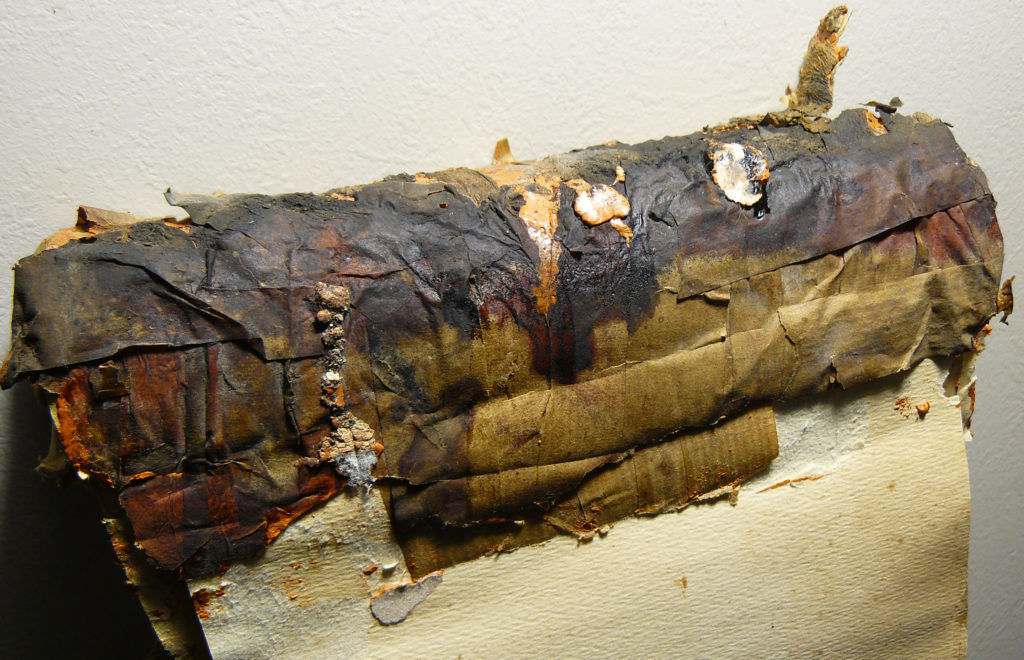
This unique gift was restored comprehensively, first passing through a disinfection chamber. Taken out after 48 hours, it underwent the process of protracted removal of a robust deposit of the above-mentioned conglutination (i.e. several layers of sealing wax and glue tape) by means of a steam scalpel and a metal spatula; this was followed by separating the individual items. Fragments of glue tape and the glued-together parts remaining on the reverse sides were removed by the same method. Throughout this process, I kept straightening the paper supports. Nevertheless, the shape memory of the original roll kept coming back, and I, therefore, chose the option of mounting Japan paper 22 g/m2 Gampi all over the reverse side. However, I applied this procedure only to the drawings that needed such a repair most of all.
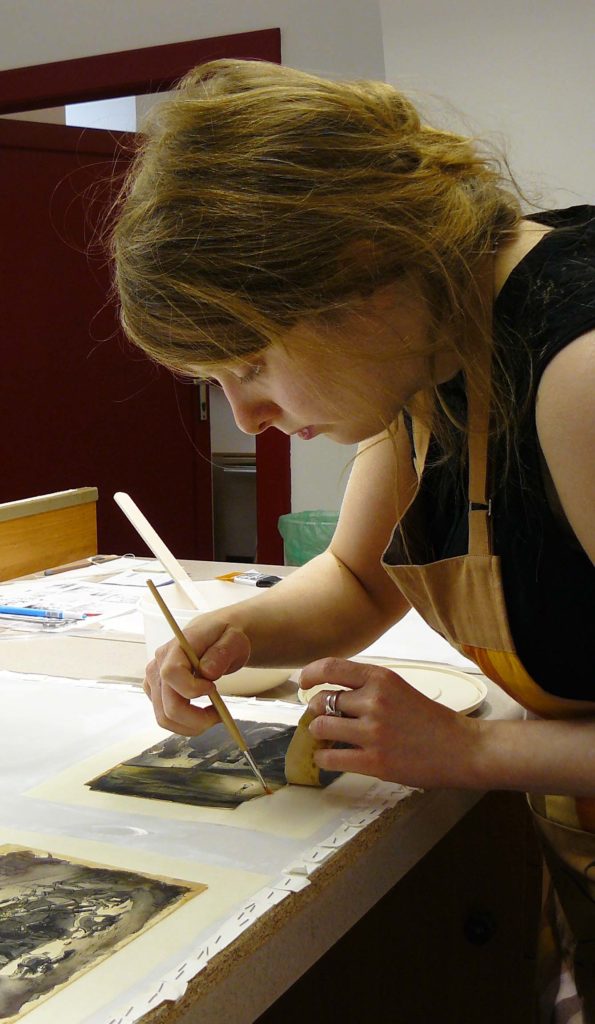
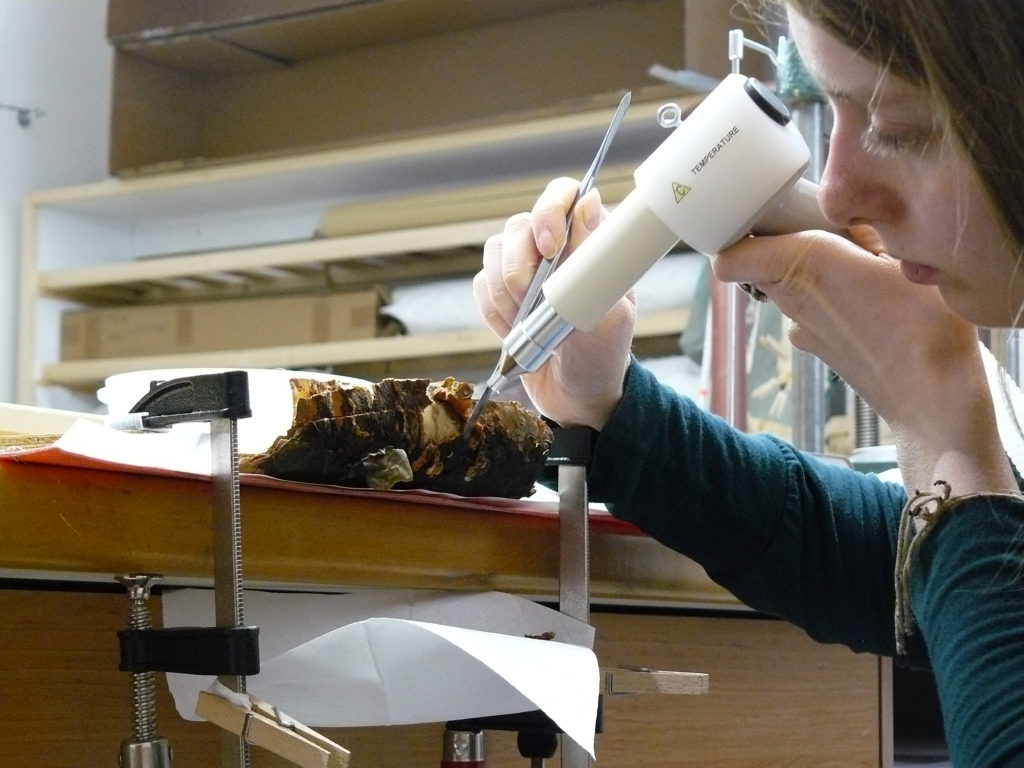
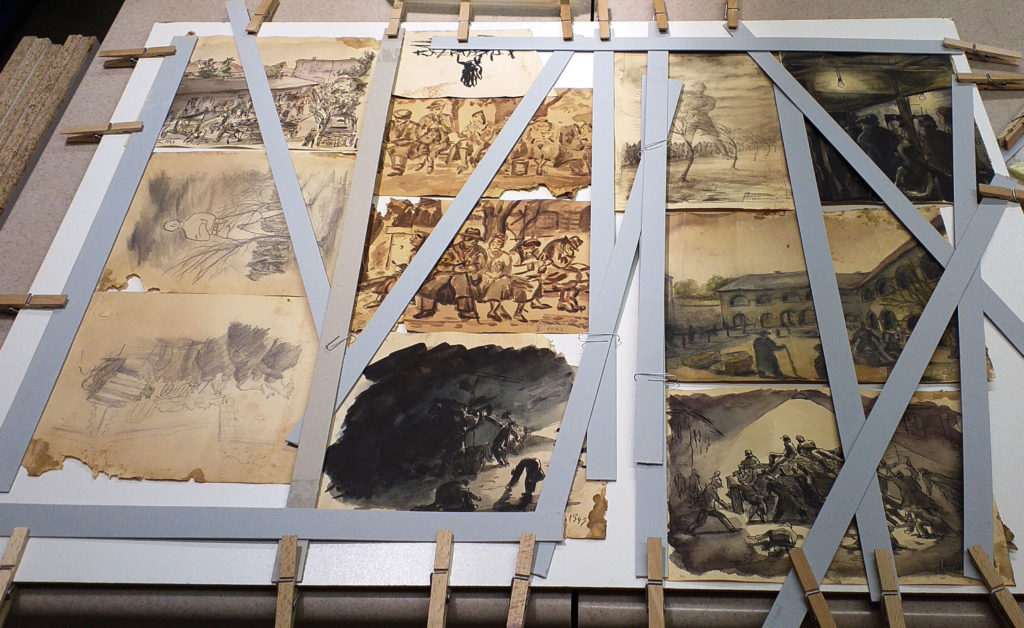
All the losses were filled in by layering Japan paper, previously toned to fit the tonality of the individual works since the colors of the supports differed. The rest of the items proved to be in good condition and so I just added wings (this method is called Strip Lining) made of Japan paper of the same grammage. Both works, whose total reverse area was mounted with Japan paper, and the drawings that were only enlarged, were stretched, naturally each separately, on a 0.5-mm paperboard with an alkali reserve. A passe-partout strip (2 mm) was glued on their top, connected from the inside on the left. This large-scale operation resulted in straightening, repairing, optically uniting and reaching a stabile tension of their paper supports.
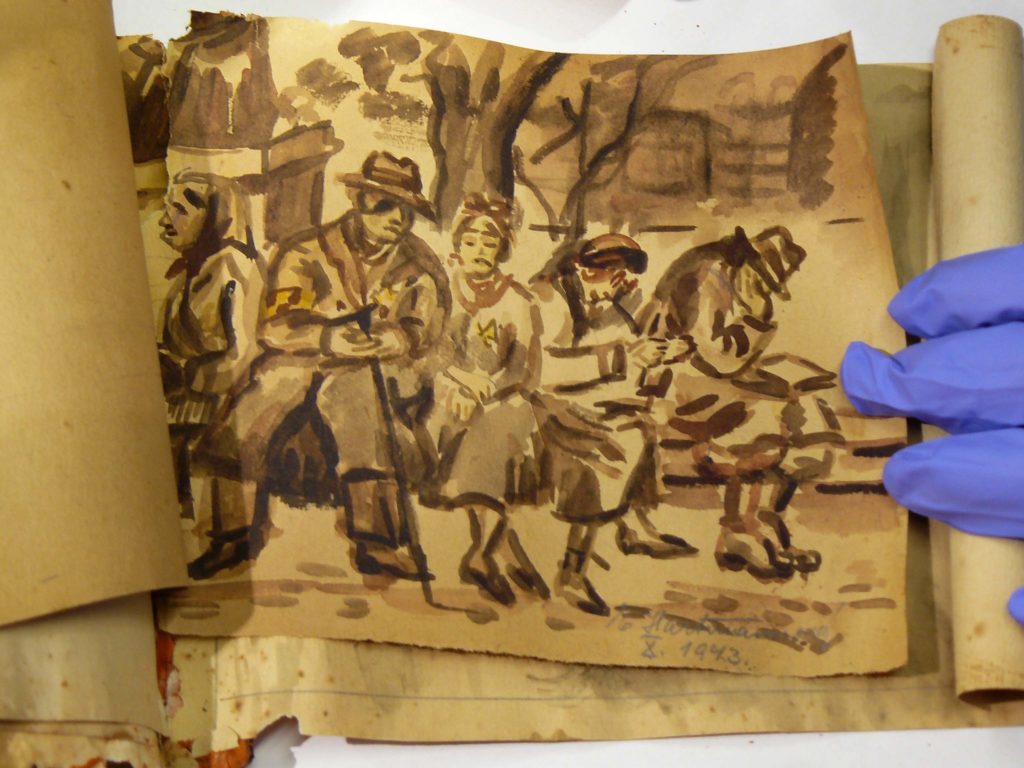
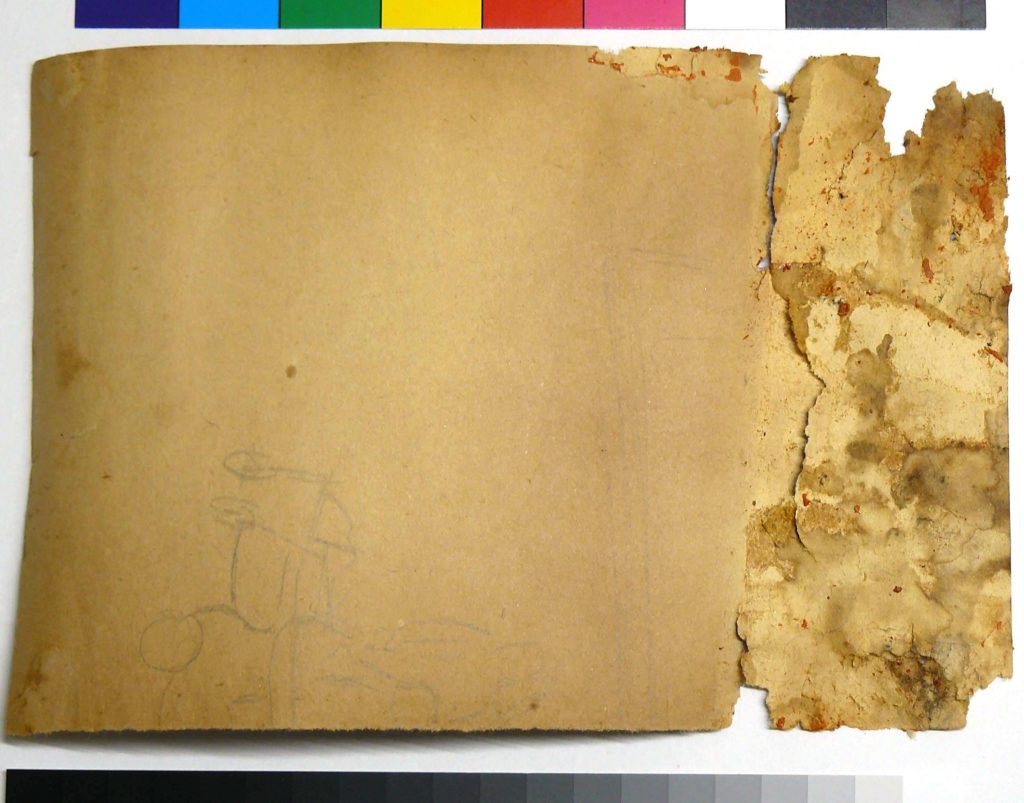

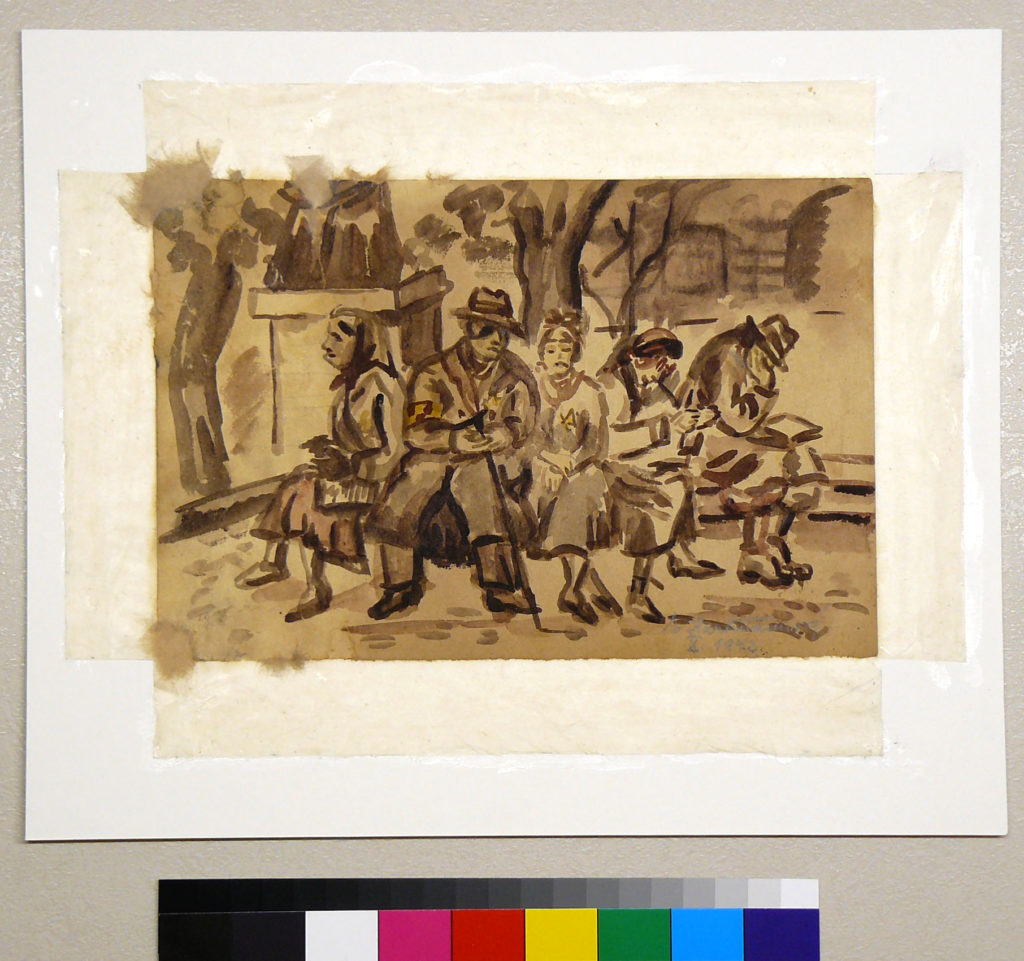
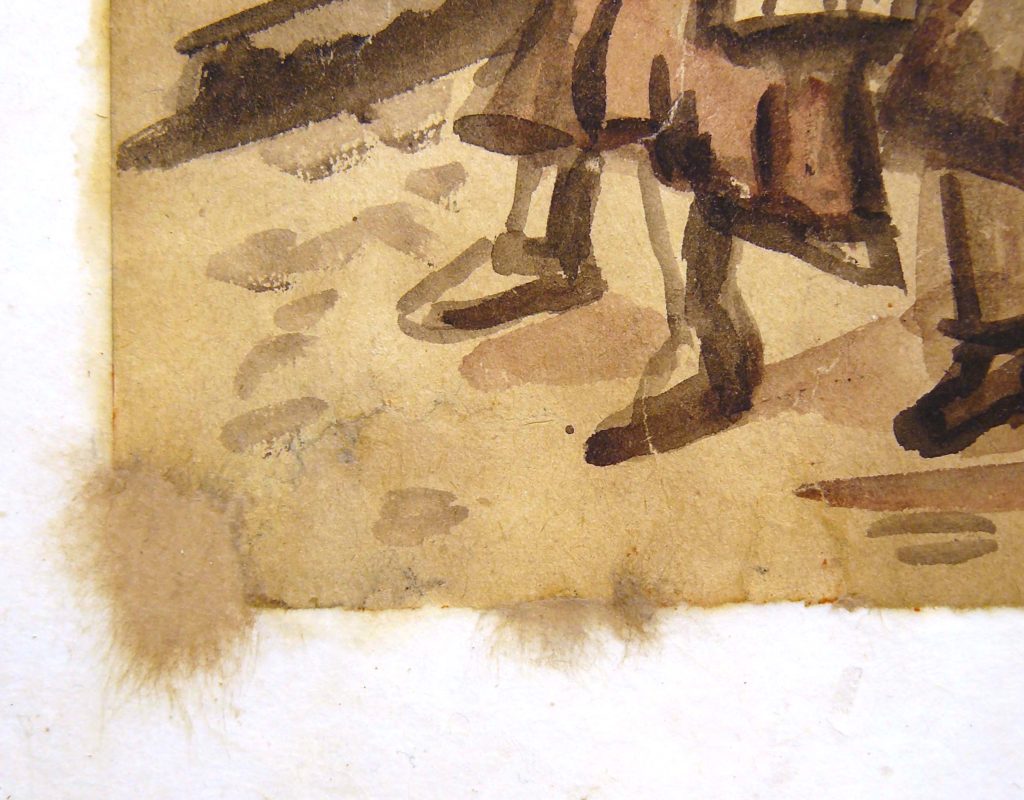
Restoration of this particular collection continued from the turn of October and November 2019 to July 2020.
Has any of the works you restored in the Memorial been put on display?
During preparations for the Terezín Memorial´s exhibition Fritz Lederer: Life and Death in the Terezín Ghetto (2019) I treated all the exhibited works by the author, with the exception of printing matrices. In some cases, this involved minor repairs, such as erasing pencil texts not written by the author himself etc. However, eight exhibits needed greater interventions, such as, for example, repairing tears and supports to prevent spread of original tears, cleaning impurities etc.
For the Memorial´s permanent exhibition on Terezín transports, installed in the town´s former weigh house and opened in January 2020, I made an identical replica of a luggage tag for one suitcase.
The job of an art restorer is evidently very interesting and diverse. It certainly requires specific skills as well as theoretical knowledge. When somebody wants to be a restorer what branch of studies is involved? Which particular school did you attend?
This type of study calls not only for talent and skills but also for artistic feeling, knowledge of history as well as chemistry, without which nobody can manage in the profession of a restorer.
I chose the branch of Applied Painting at the Secondary School of Decorative Arts in Prague 3, based in the Žižkov district, for my secondary school training. In my third year, as part of my summer practical course, I spent some time in the art-restoration studio TRITON in Prague where I and my classmate had an opportunity to salvage a drowned vaseand other items. And at that time, I made up my mind to study the branch of art restoration at the university. I went through the offer of individual schools, and it was the Faculty of Restoration in Litomyšl, since 2005 part of the Pardubice University, that caught my eye and attracted my interest. At that faculty I finished my bachelorship studies in the branch of restoration and conservation of works of art on paper and related materials. I followed this up with master´s degree studies of restoration and conservation of art and decorative art works on paper, textile and related supports, graduating in 2019.
Luisa Wáwrová is a highly energetic and creative person dedicated to her work; she can speak about her profession enthusiastically and attractively. On two previous occasions she was involved in preparations for the summer creative art workshops for youth held in the Terezín Memorial.
Interview with Luisa Wáwrová was conducted by Naděžda Seifertová

